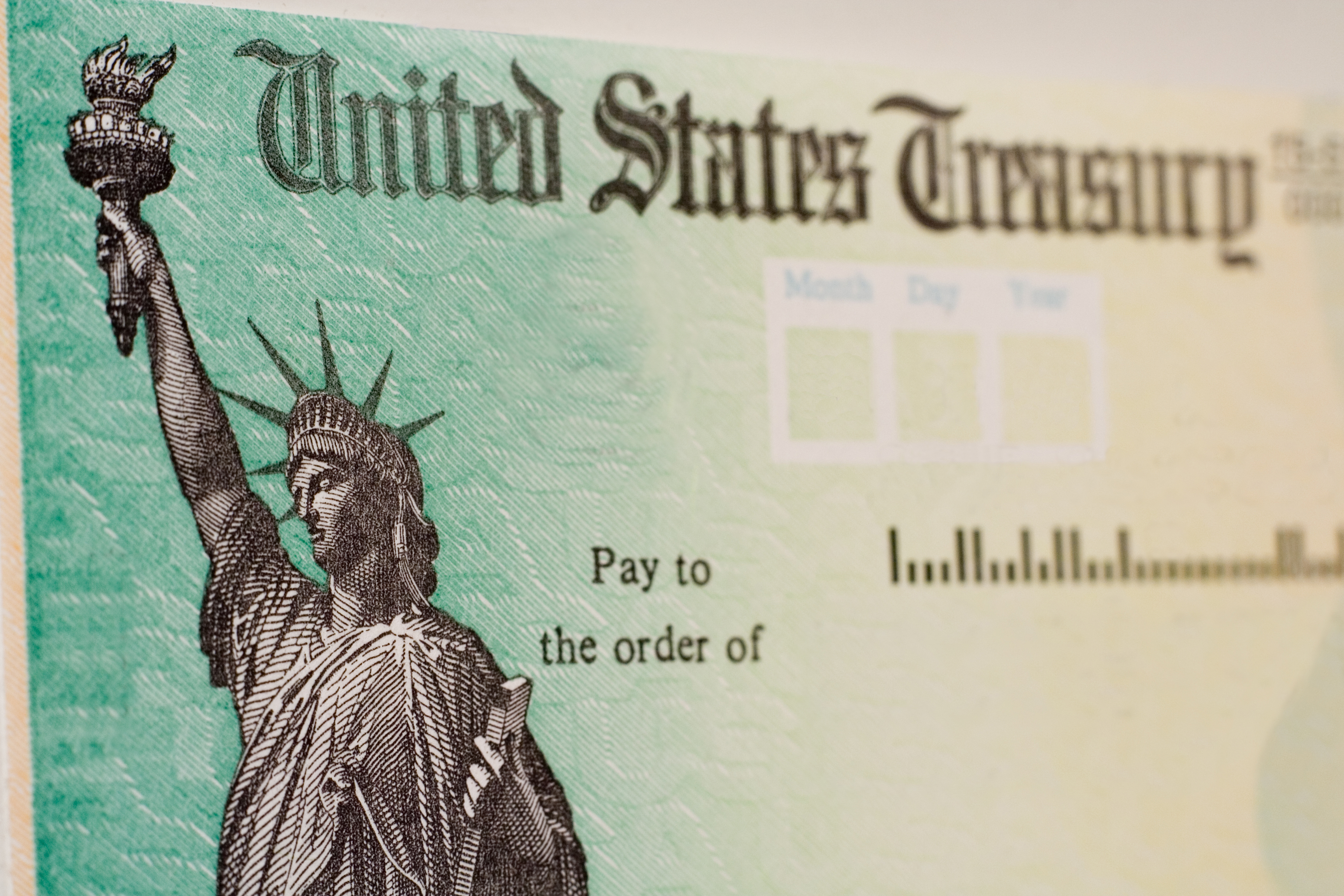Amazing Tax-Free Income From Closed-End Muni Bond Funds
These investments are the secret to earning yields as high as 7% for your portfolio. But CEFs are not without risk.

Can you imagine an investment that pays 10% nowadays and doesn’t own garbage? Believe it or not, such a thing exists. You can buy it through your brokerage account, paying regular commissions; you can sell it anytime you please; and you don’t have to be a rocket scientist to understand what you own.
We’re talking about closed-end funds that invest in tax-free municipal bonds. Many of them sport current yields of 6% to 7%. If you’re in the top, 35% federal tax bracket, a tax-free yield of 6.5% is equivalent to 10% from a taxable security.
The Risks
Of course, closed-end funds, or CEFs, are not without risk. The bonds in the portfolios typically come with interest coupons of 3% to 5%, and nearly all of the funds inflate those yields by using leverage. They borrow, at short-term interest rates, 30 cents to 50 cents for each dollar of their assets and use the extra cash to buy more bonds.

Sign up for Kiplinger’s Free E-Newsletters
Profit and prosper with the best of expert advice on investing, taxes, retirement, personal finance and more - straight to your e-mail.
Profit and prosper with the best of expert advice - straight to your e-mail.
The strategy works as long as a fund’s holdings yield more than its borrowing costs. But it bombs when interest rates spike, raising a fund’s financing costs and smashing the value of the bonds it owns. As long as short-term interest rates are near zero and tax-free bond yields remain high relative to yields on Treasury bonds, however, investors have little reason to worry.
Outstanding Returns
For muni CEFs, 2011 has been a rousing year. On average, the group gained 12.8% through October 7, according to Morningstar (the figures are for returns on a fund’s assets). By comparison, the average national open-end muni fund earned 7.2%.
What’s behind these outstanding returns? It starts with generous tax-free distributions, which are generally 6% to 7% when you divide a fund’s share price by the annualized cash-payout rate. Most CEFs pay a few cents monthly and revise the figure as market conditions dictate.
But the lion’s share of this year’s gains came from a bull market in tax-free bonds. And that, in turn, represents a rebound from a sell-off that started late last year because of a panic about the solvency of state and local governments. Holders of regular (or open-end) tax-exempt funds redeemed shares in waves, forcing managers to dump billions of dollars worth of bonds to raise cash.
Interestingly, many buyers of those depressed bonds were CEF managers, including some who bought debt that managers of open-end funds inside the same organizations dumped. The CEF managers, who had no need to sell bonds because of the way closed-ends work, loved it. “We bought a broad range of excellent stuff -- including some hospital bonds and other high-quality bonds that got cheap,” says Cynthia Clemson, who runs or co-manages a number of Eaton Vance CEFs. This kind of opportunistic buying suggests that CEFs should outpace their open-end brethren until the tax-free bond market heads south. But with investors fretting far more over Greece and Italy than about California and Illinois, you’re not likely to see that for some time.
Identifying Winners
Several fund firms, led by BlackRock, Eaton Vance, Nuveen and Pimco, offer scads of muni CEFs. Nuveen sponsors 29 long-term national muni CEFs with meaningless names, such as Quality Income and Municipal High Income Opportunity. But no single fund has must-have, go-to stature. The distribution rate and duration (a measure of sensitivity to interest-rate movements) of the funds tend to be similar. Often, the same managers and analysts staff multiple funds, so sibling funds may own identical or nearly identical bonds. But there are subtle differences among CEFs that can make some more attractive than others.
Quality. Defaults are rare, and bond ratings have their shortcomings. But you’ll get an extra measure of protection if you stick with funds that own mostly bonds rated single-A or better. Those funds are likely to be loaded with general-obligation and essential-service bonds (for water, sewer, highway projects and the like). A fund filled with “community development” or entertainment-related debt will probably lag higher-quality funds in a bear market for municipals.
Discounts and premiums. It is an oversimplification to say you should buy a muni CEF (or any closed-end fund) only when its shares trade at a discount to net asset value (NAV) per share. Some always trade at a premium, and in any event, discounts and premiums tend to be narrower for muni CEFs than they are for, say, closed-end stock funds. Just don’t buy any muni CEF selling at a double-digit premium to NAV. If you dare stretch for extra income with a high-yield (junk) tax-free CEF, wait for the fund to trade at a discount.
Reserves. Assets listed as “undistributed net investment income,” or UNII, provide a backstop should the fund’s investments earn less than it is committed to pay in dividends. You want a fund’s UNII to cover at least two months’ payouts. Three is better. You can find this data on a fund’s Web site or in its shareholder reports.
5 Attractive Muni CEFs
Listed alphabetically below, all of the muni CEFs have good cash reserves, and all but one use leverage. All of the funds invest in states and localities across the nation. If you live in a state with a high income tax, you can choose from among dozens of single-state muni CEFs. Total returns are based on performance of a fund’s assets. All data is as of October 7.
BlackRock MuniHoldings Quality Fund II (symbol MUE)
2011 Return: 15.2%
Current Distribution Rate: 6.7%
This CEF combines a high distribution rate (without a junky portfolio) and an above-average performance history. Annual expenses of 1.07% are about average.
DWS Municipal Income Trust (KTF)
2011 Return: 14.8%
Current Distribution Rate: 6.8%
Run by veteran manager Phil Condon, this CEF has one of the best long-term records in the field. It’s 50% leveraged (meaning the fund borrows 50 cents for every dollar of its net assets), which adds to risk. But the duration of its bonds is shorter than in competing funds, which cuts risk.
Invesco Insured Municipal Bond (IMC)
2011 Return: 13.4%
Current Distribution Rate: 5.5%
Don’t expect any surprises from this fund. It holds a high-quality portfolio that’s big on general-obligation and public-service revenue bonds, and it hardly ever trades them. Annual fees are a modest 0.50%.
Nuveen Municipal Value (NUV)
2011 Return: 8.5%
Current Distribution Rate: 5.0%
The yield is light because this fund does not use leverage. But that also makes it the best choice for the safety-minded. In the third quarter of 2008, when leveraged funds got battered, NUV lost just 1%.
Western Asset Managed Municipals (MMU)
2011 Return: 12.8%
Current Distribution Rate: 6.3%
Strong reserves make this CEF a strong contender. At last report, it had enough undistributed income to cover five months’ worth of payouts at the current rate. Yet its distribution yield, asset quality and 2011 performance are all good.
Get Kiplinger Today newsletter — free
Profit and prosper with the best of Kiplinger's advice on investing, taxes, retirement, personal finance and much more. Delivered daily. Enter your email in the box and click Sign Me Up.

-
 Married? Five Ways to Ensure Your Estate Plans Work in Tandem
Married? Five Ways to Ensure Your Estate Plans Work in TandemGetting on the same page now means fewer potential problems when it counts.
By Kiplinger Advisor Collective
-
 12 Investments No Retiree Should Make
12 Investments No Retiree Should MakeIn retirement, when it's wise to take fewer risks with your nest egg, some investments are just nuts.
By David Rodeck
-
 Why Investors Needn't Worry About U.S. Credit Downgrade
Why Investors Needn't Worry About U.S. Credit DowngradeFitch Ratings The United States saw its credit rating downgraded for just the second time in history, but experts aren't worried about the long-term damage to stocks.
By Dan Burrows
-
 Bond Ratings and What They Mean
Bond Ratings and What They Meaninvesting Bond ratings measure the creditworthiness of your bond issuer. Understanding bond ratings can help you limit your risk and maximize your yield.
By Donna LeValley
-
 Bond Basics: Treasuries
Bond Basics: Treasuriesinvesting Understand the different types of U.S. treasuries and how they work.
By Donna LeValley
-
 Bond Basics: Ownership
Bond Basics: Ownershipinvesting Bonds come in a variety of forms, but they all share these basic traits.
By Donna LeValley
-
 Bond Basics: Pick Your Type
Bond Basics: Pick Your Typeinvesting Bonds offer a variety of ways to grow wealth and fortify your portfolio. Learn about the types of bonds and how they work.
By Donna LeValley
-
 Silicon Valley Bank, Signature Bank Failures Send Bank Stocks Reeling
Silicon Valley Bank, Signature Bank Failures Send Bank Stocks ReelingFinancial stocks continued to sell off following the collapse of regional lenders SVB and Signature Bank.
By Karee Venema
-
 Stock Market Today: S&P 500 Snaps Weekly Losing Streak
Stock Market Today: S&P 500 Snaps Weekly Losing StreakAI stocks were big winners on Friday after C3.ai posted solid earnings and guidance.
By Karee Venema
-
 Stock Market Today: Stocks Bounce Back; UNP Rallies After CEO Splits
Stock Market Today: Stocks Bounce Back; UNP Rallies After CEO SplitsThe major benchmarks closed higher Monday after notching their worst week of the year on Friday.
By Karee Venema